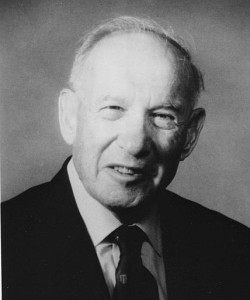
Carrier Management reached out to leaders in property/casualty insurance industry to find out about innovation in the industry. One thing we wondered about: How do leaders learn best practices for spearheading innovation efforts?
Here nine executives share their favorite sources of information. The hands-down favorite of the group is Peter Drucker.
Q8: What is the best book you have read about innovation? The best course or seminar you have attended? What was a key takeaway from the book or education session?
- Q1: The greatest innovation in the P/C insurance industry
- Q2: Describe the greatest innovation at your company
- Q3: Innovation or innovator outside the insurance industry
- Q4: How your company encourages innovation
- Q5: The biggest obstacle to innovation within the insurance industry?
- Q6: The next innovation to impact the P/C insurance industry
- Q7: Your role in leading innovation.
- Q8: Best book you have read about innovation
- Q9: Describe a failed initiative at your company
- Q10: Collaborating with market competitors
- Q11: Can P/C insurers disrupt other industries?
Galanski (Navigators): “Managing in the Next Society” by Peter F. Drucker. In it, Drucker made the observation, “The reason that the financial services industry is in trouble is quite simple. The dominant financial services institutions have not made a single major innovation in 30 years.” Of course, Drucker died in 2005. It would have been fascinating to hear his views after the financial crisis.
Ward (Hamilton): I’m a big Peter Drucker fan as his common-sense approaches to management, entrepreneurship and innovation resonate with me. A key takeaway for me is that innovation is less about the “eureka” moment and more about hard work—analysis, finding and leading good people, sound strategy, and thoughtful, nimble execution. Innovation starts with a careful analysis of both internal and external data, processes and developments.
Company culture is often a key component in innovative activity. Because existing companies are built around finding, keeping and servicing existing customers, their approach to innovation tends to be incremental rather than revolutionary. New companies are often purpose-built to innovate in a particular industry and are able to attract believers who furnish capital and expertise. Without an existing customer base, those companies have to find a way to get and keep the business or die.
Watson (Argo): There really are many great books written on the subject of innovation. Something I rediscovered recently resonated with me. Iit wasn’t a book but an article in HBR titled “The Ambidextrous CEO.” There’s a quote in there about innovation’s “only friend” being the CEO. It’s about managing the tension between the need for resources of the core business and the need to allocate resource to build future businesses.
In many organizations it can be true that innovation becomes solely owned by the CEO. I set out many years ago to make sure that never happens in our company. Innovation at Argo is a shared responsibility at the executive level, and we are rapidly pushing that ownership right through the organization. It does remain my job to manage the tension, but we see that as a positive, not a negative, as it means we are creating new opportunity. The need to take from this quarter’s bottom line to generate something much greater in eight quarters is understood across our leadership.
Wurzler (OneBeacon Technology): I have an entrepreneurial spirit, so I was drawn to a book by Peter Drucker, “Innovation and Entrepreneurship,” which serves as a continual reminder to simply think. This book has helped me focus on the processes required to develop, launch and profitably grow product ideas.
In the technology space, I value attending the annual InterOp conference, which is a very hands-on event. We typically come home with all kinds of new ideas or variants of old ideas to improve what we do and often to create something new.
Rios (American Modern): The book that had the most impact on me was “Freakonomics” by economist Steven D. Levitt and journalist Stephen J. Dubner. It forces you to look at things from a different perspective.
I also like to read biographies of people like Churchill, Lincoln and Eisenhower. It’s amazing what they went through. They always reinvented themselves.
 Lightfoot (Guy Carpenter): The best book having to do with innovation I’ve read recently was a book on statistics—”The Signal and the Noise” by Nate Silver. He is the person who accurately predicted the 2012 U.S. presidential vote outcome in all 50 states. His book provided interesting examples of not only how important the quality of the data is when you are designing models but also the quality of the model developers’ assumptions.
Lightfoot (Guy Carpenter): The best book having to do with innovation I’ve read recently was a book on statistics—”The Signal and the Noise” by Nate Silver. He is the person who accurately predicted the 2012 U.S. presidential vote outcome in all 50 states. His book provided interesting examples of not only how important the quality of the data is when you are designing models but also the quality of the model developers’ assumptions.
Another key takeaway from the book is how critically evaluating multiple models (of the same thing) helps the user not only derive a better prediction but also have more confidence in the result, which often leads to a better decision-making process.
Colberg (Assurant): The best teacher in life is experience. When I worked at one of my first jobs, I learned that it can be very difficult to move businesses outside their traditional mindset even if what you are proposing saves them significant money.
The company had achieved great success with their iconic brands and resisted making changes to these products because they were afraid of tampering with the customer experience. While such reluctance is understandable, it creates an atmosphere that discourages innovation and may prevent a company from being able to quickly adapt to changing consumer needs.
I began to understand that big enterprises may be good at repeatable processes done on a large scale, but they are not good at quickly adapting to address changes in the marketplace. To innovate, you need to be nimble and be willing to accept change and sometimes even to embrace failure on your way to achieving your goals.
Hendrick (XL Catlin): I can’t say that I’ve learned much about innovation from a book or educational session. I’ve learned much more about innovation from my colleagues. We’ve asked them to produce profitable business, take on new responsibilities, and challenged them to find new ideas [and] be innovative at the same time. And they have. I’ve taken the most valuable lessons from how they come up with ideas, what challenges they faced in implementing them, and how they overcome those obstacles to deliver a product to market.
Kelley (Ironshore): Innovation is a constant, best understood through practical life experiences. I have been in the forefront of innovation for many years, focusing on product development and adaptation within diverse sectors of the marketplace.
Business books and study on the culture of innovation are written or discussed at specific moments in time. Learning about innovation is an ongoing, engaging and collaborative exercise shared among employees, clients and distribution partners.
Read more innovation responses:
- Q1: The greatest innovation in the P/C insurance industry
- Q2: Describe the greatest innovation at your company
- Q3: Innovation or innovator outside the insurance industry
- Q4: How your company encourages innovation
- Q5: The biggest obstacle to innovation within the insurance industry?
- Q6: The next innovation to impact the P/C insurance industry
- Q7: Your role in leading innovation.
- Q8: Best book you have read about innovation
- Q9: Describe a failed initiative at your company
- Q10: Collaborating with market competitors
- Q11: Can P/C insurers disrupt other industries?
Read other innovator’s response by question:
 Stanley A. Galanski, President and CEO, The Navigators Group, Inc.
Stanley A. Galanski, President and CEO, The Navigators Group, Inc. Mark E. Watson III, President and Chief Executive Officer, Argo Group International Holdings, Ltd.
Mark E. Watson III, President and Chief Executive Officer, Argo Group International Holdings, Ltd. Kevin H. Kelley, Chief Executive Officer, Ironshore Inc.
Kevin H. Kelley, Chief Executive Officer, Ironshore Inc. John Wurzler, President, OneBeacon Technology Insurance
John Wurzler, President, OneBeacon Technology Insurance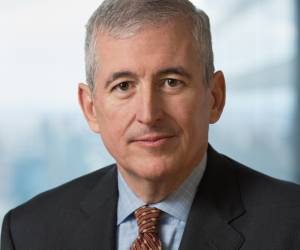 Alan B. Colberg, President and Chief Executive Officer, Assurant, Inc.
Alan B. Colberg, President and Chief Executive Officer, Assurant, Inc. Manny Rios, President and CEO, American Modern Insurance Group
Manny Rios, President and CEO, American Modern Insurance Group Dave Pratt, General Manager, Usage-Based Insurance, Progressive
Dave Pratt, General Manager, Usage-Based Insurance, Progressive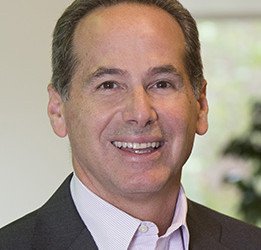 Berto Sciolla, EVP and Manager of North American Treaty Reinsurance,Gen Re
Berto Sciolla, EVP and Manager of North American Treaty Reinsurance,Gen Re Greg Hendrick, Chief Executive, Insurance, XL Catlin
Greg Hendrick, Chief Executive, Insurance, XL Catlin Anand Rao, Principal, PwC U.S. Advisory Practice
Anand Rao, Principal, PwC U.S. Advisory Practice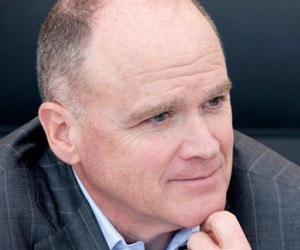 Mike McGavick, Chief Executive Officer, XL Catlin
Mike McGavick, Chief Executive Officer, XL Catlin David M. Lightfoot, Managing Director, Head of GC Analytics – Americas, Guy Carpenter
David M. Lightfoot, Managing Director, Head of GC Analytics – Americas, Guy Carpenter Conan Ward, Chief Executive Officer, Hamilton USA
Conan Ward, Chief Executive Officer, Hamilton USA Ming Lee, Chief Executive Officer, AIR Worldwide
Ming Lee, Chief Executive Officer, AIR Worldwide Laura Hay, National Insurance Sector Leader, KPMG LLP
Laura Hay, National Insurance Sector Leader, KPMG LLP John Lupica, Vice Chairman, ACE Group; Chairman, Insurance–North America
John Lupica, Vice Chairman, ACE Group; Chairman, Insurance–North America
Get all 16 interview neatly packaged in a single PDF download. Explore ideas by personality and by question. More than 60 pages of content.





















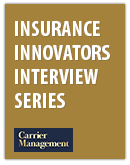
 Executives on the Move at Liberty Mutual, Cowbell, W. R. Berkley
Executives on the Move at Liberty Mutual, Cowbell, W. R. Berkley  Slideshow: Carrier Management’s 2025 Top Editor’s Picks (Unlocked)
Slideshow: Carrier Management’s 2025 Top Editor’s Picks (Unlocked)  Why the Middle Market Matters and How Insurers Can Capture It
Why the Middle Market Matters and How Insurers Can Capture It  Carrier Management’s 2025 Top Features (Reader’s Picks Unlocked)
Carrier Management’s 2025 Top Features (Reader’s Picks Unlocked) 